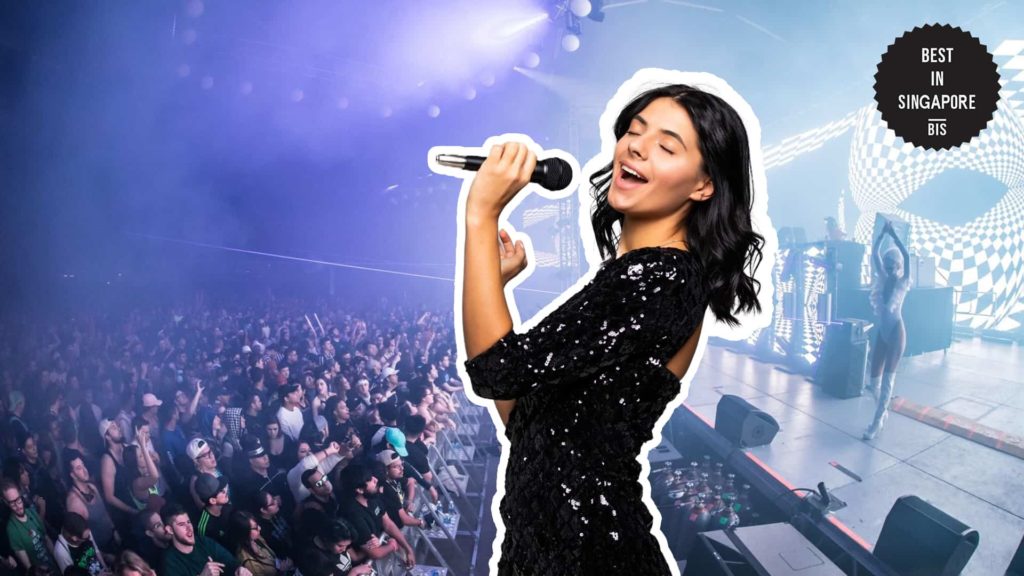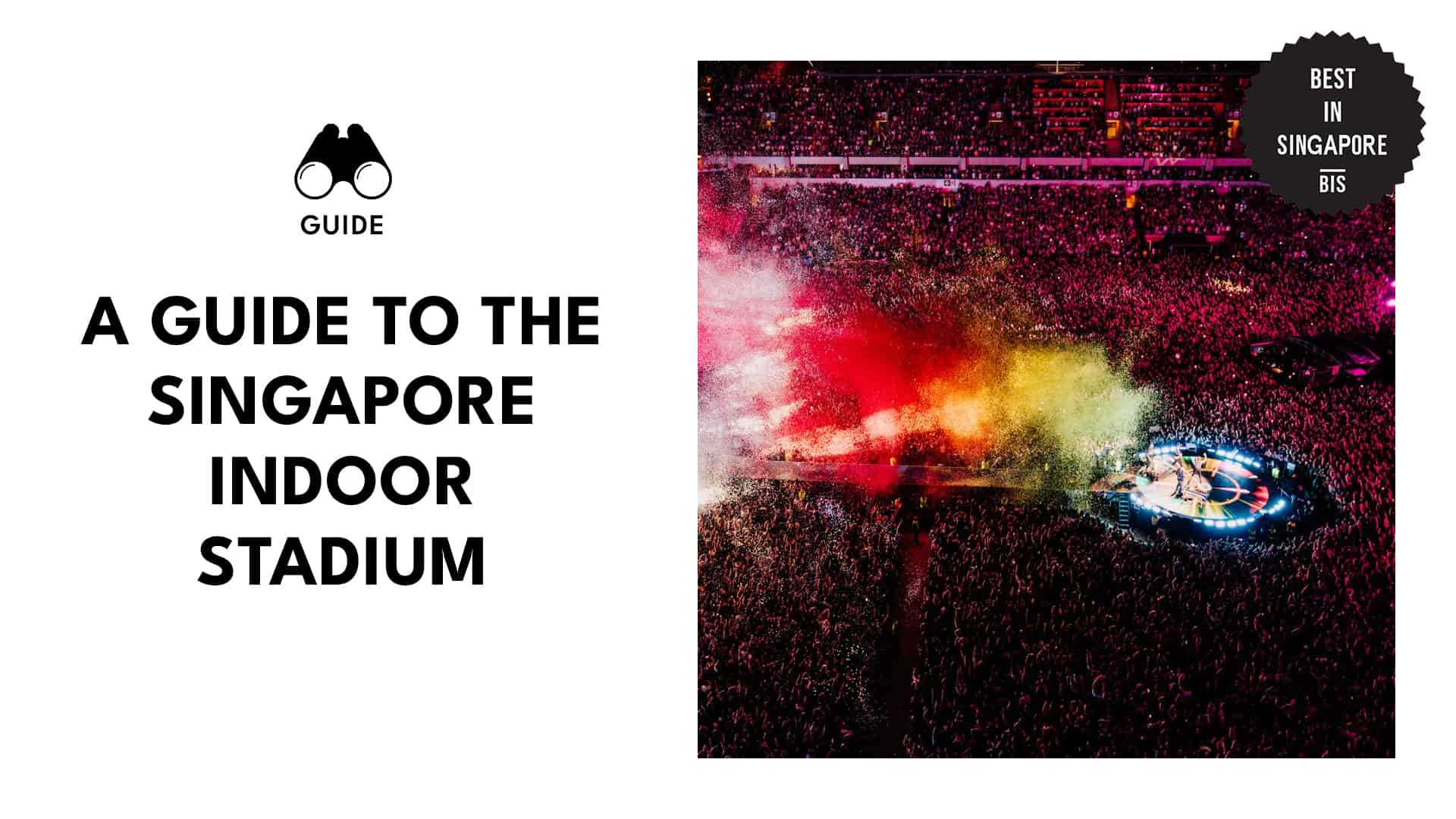Guide to Watching Your Favorites at Singapore Indoor Stadium
Most big concerts and events in Singapore tend to be held at the Singapore National Stadium, the country’s biggest stadium. But there are other venues as well, and one perfect example is the Singapore Indoor Stadium.
The Indoor Stadium is part of the Singapore Sports Hub, and its maximum seating capacity is 15,000. Because of this, it’s the perfect venue for intimate concerts and other small events!
If you’re attending an event held in this stadium, this article should answer any questions that you have.
Things to Know
Address: 2 Stadium Walk, Singapore 397691
Contact Number: +6566538900
History and Background
The Indoor Stadium began construction in 1987 during the country’s first post-independence recession. For this reason, the public viewed the construction as a sign of public development, especially in the construction industry.
The arena was designed by Kenzo Tange, a renowned Japanese architect who won the Pritzker Prize for Architecture in 1987. He was also the one who designed the Nanyang Technological University.
Construction finished in 1987, and on December 31, 1989, the Indoor Stadium was officially opened. Prime Minister Lee Kuan Yew himself led this momentous celebration.
Main Features of the Indoor Stadium
The architectural style is the first thing you’ll notice when visiting the Indoor Stadium. Tange was known for incorporating modernist techniques, so the arena doesn’t have pillars and its roof is cone-shaped.
Another main feature to keep in mind is the arena’s size. It has a total area of 54,178 square meters, which can seat approximately 12,000 (for concerts) or 15,000 people (for sporting events).
Inside the arena, you can find a four-screen Sony Jumbotron suspended from the ceiling in the center. This screen lets spectators get a close-up glimpse of the main action on the floor or stage.
How to Get There
MRT: Riding the MRT is your best bet in getting to the Indoor Stadium. There’s the Stadium MRT Station (CC6) within the vicinity; you just have to take Exit A and walk to the arena.
Bus: Ride Bus Service 11, and disembark along Stadium Crescent (Bus Stop No. 80199). It’s directly outside the Indoor Stadium.
Car: If you prefer driving your own car, the Indoor Stadium has a car park (Car Park K & L). If the parking lot there is full, you can try the car park at the Kallang Wave Mall basement (Car Park B).
The National Stadium vs. the Indoor Stadium
One misconception that most people, especially non-Singaporeans, have is that the National Stadium and the Indoor Stadium are one and the same. But they’re actually two different buildings; they’re just situated near each other.
The National Stadium is much bigger than the Indoor Stadium. In fact, the stadium’s maximum seating capacity is 55,000, which is more than three times the Indoor Stadium’s.
Another key difference between the two is that the Indoor Stadium is a closed venue. It also has air conditioning inside.
Meanwhile, the National Stadium is mostly open; it does have a retractable roof, but it’s only used when it’s raining. For ventilation, the stadium uses a bowl cooling system, which pumps cool air underneath the seats.
Events Held in the Indoor Stadium
Sporting Events
Since the Indoor Stadium is part of the Singapore Sports Hub, sporting events are the most commonly held events here.
To be more specific, matches for sports like badminton, basketball, netball, mixed martial arts, kickboxing, pro-wrestling, and esports are hosted in the Indoor Stadium. Sometimes, there are also monster truck races here.
Moreover, the Singaporean ONE Championship and the ASEAN School Games prefer to hold their events in the Indoor Stadium.
Concerts
Aside from sporting events, the Indoor Stadium is a great venue for music concerts, especially ones that don’t require a lot of equipment like orchestra performances and acoustic shows.
Some local and international artists also have their concerts in Singapore. Even big-name artists host concerts in the Indoor Stadium.
A few examples of artists who have performed in the Indoor Stadium are Elton John, The Pussycat Dolls, Black Eyed Peas, Ed Sheeran, TWICE, Britney Spears, and Taylor Swift.
Community Events and Shows
— From: ticketmastersg
Sporting events and concerts aren’t the only ones held in the Indoor Stadium. Sometimes, there are community events and shows hosted here.
A perfect example is the Disney on Ice show, which is a yearly event that visits countries all over the world. In this show, you’ll be able to witness various Disney characters skate on ice and perform some of the franchise’s best songs.
It’s also possible for local communities and organizations to host their own events or shows in the Indoor Stadium, so be on the lookout for them
Cultural Events
Singapore is a country with a diverse culture, so it honors a lot of holidays and celebrations. Singapore Sports Hub, as a whole, joins in on the fun, which means that the Indoor Stadium sometimes becomes a venue for cultural events.
For example, an indoor Chingay, an annual street parade held every Chinese New Year, was performed inside the arena. During Deepavali, there are dances and performances organized by the local Indian community.
Renting the Indoor Stadium
Did you know that technically, you can rent out the Indoor Stadium for your event—whether it’s a huge birthday celebration, a corporate party, or other celebrations? You’ll have to pay around S$10,000.
If this sounds interesting, fill out the form provided by the Sports Hub website. They should contact you once they’re done processing your information.
How to Buy Tickets for Events in the Indoor Stadium
The events page on the Singapore Sports Hub’s website has all the information regarding the events held at its different venues.
To get started on buying a ticket, simply filter the page by venue and find the event you’re interested in.
Once you’ve selected the event, you’ll be led to a page with the seating information. Determine your desired seat before you move on to buy the tickets.
When it’s time to buy your ticket, you’ll be directed to a third-party ticket vendor. Usually, it’s Ticketmaster SG, but it can also be other vendors like Live Nation, SISTIC, and Ticketek.
Once you’re on the ticket vendor’s page, all you have to do is follow the instructions laid out in front of you. And voila! Now, you have a ticket for your event.
Tips on Visiting the Indoor Stadium
Conditions of Entry

Before getting inside the Indoor Stadium, be sure to familiarize yourself with the Sports Hub’s conditions of entry. Here’s a page with all the conditions, but the important points you need to remember are the following:
- Keep your ticket safe. Many vendors provide an electronic ticket, so you need to save that on your device. You can also print out the ticket just in case you lose your phone on the day of the event.
- Never ever bring restricted items. This includes weapons or items that look like weapons, fireworks or flares, laser pointers, drugs, large bags, projectile items, and professional cameras.
- Flash photography isn’t allowed inside the arena.
Regarding Food and Beverage

Bringing outside food and beverages is not allowed in the Indoor Stadium. That said, you can bring an empty plastic water bottle inside and just fill it with water at a water refill station.
As for food, there are concession stands inside the arena, but they run out of products easily. There’s also a limited selection of snacks, so it’s possible you won’t find one that you like.
To be safe, I recommend you eat before going inside the arena. The Sports Hub has a variety of dining options; you just have to go inside Kallang Wave, the hub’s shopping mall, to find them.
Other General Tips

Here are a few more tips to remember if you’re coming to the Singapore Indoor Stadium for a concert or any other event.
- Know your route by heart. This is especially important for people who are coming to the arena via public transportation. Be sure to research your preferred mode of travel and memorize that.
- Arrive early. Around three to four hours before your event is enough. This way, you can avoid the inevitable traffic and still get time to eat something. Additionally, arriving early lets you buy merch if there’s a merch stand.
- Find the nearest toilets. Many people don’t do this, but I recommend you do. Before getting to your seat, find the nearest toilet to you; that way, you won’t get lost if you do need to go in the middle of the show.
- Bring ear plugs. Concerts and other live events are going to be loud, and if you’re not careful, they might damage your ears. To avoid this, be sure to bring ear plugs and wear them during the show.
- Bring a pair of binoculars. The Indoor Stadium is small enough that even the farthest seats can provide a clear view. But if you have a horrible vision, it’s best if you bring binoculars to see the main action below.
- Bring a power bank. Your phone’s likely going to die while you’re attending a concert. But you’ll still need the phone to book a ride home or for other emergencies, so you need a power bank to charge it up.


